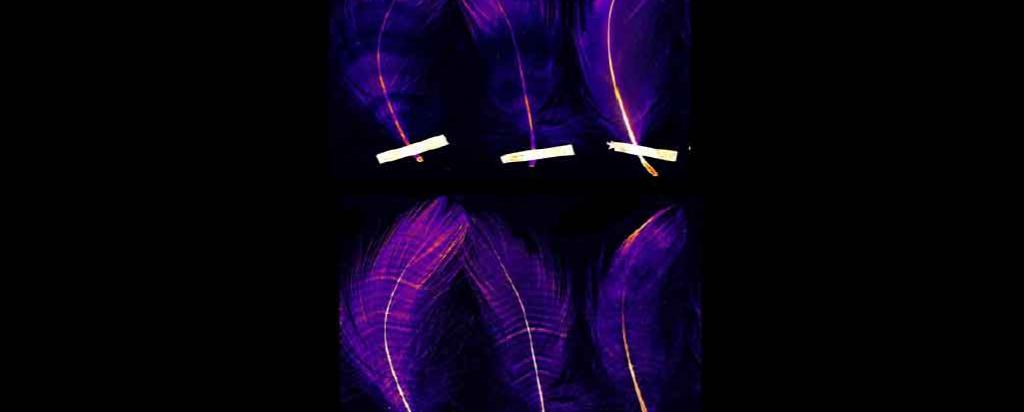
Published on the 25th May 2017 by ANSTO Staff
The identification of essential chemical elements in the feathers of long-distance migratory seabirds using advanced X-ray imaging techniques promises new insights into the underlying physiological processes behind feather growth.
In research published in Nature Scientific Reports, a team of investigators led by ANSTO biologist Nicholas Howell and Prof Richard Banati provided evidence of previously unseen spatial patterns in the distribution of metals that do not appear to be linked to physical characteristics in the feathers.
Because the patterns are not linked to pigmentation, thickness or other structural characteristics in the feathers, the authors suggest another unidentified mechanism may be at work.
“Our collaboration has produced some remarkable depictions of the feathers that let us see into complex and pattern-forming, biochemical processes in cells,” said Prof Banati.
High resolution images collected using the X-ray fluorescence microprobe and Maia spectroscopic detector at the Australian Synchrotron, revealed independent distribution of zinc, calcium, bromine, copper and iron.
In this investigation, the technique was applied to the whole feather, and required no subsampling or extraction procedures in order to accurately identify elements.
“Using this powerful instrument and Maia detector, David Paterson and Daryl Howard were able to scan samples that were several centimetres in length at micron resolution,” said Howell.
X-ray fluorescence microscopy allows you to view hard biological structures in their natural state. The detector system speeds up the scanning of the sample in real time and delivers data at unprecedented resolution.
The images, which have previously unachieved sensitivity and resolution, provide a distribution map of a range of chemical elements in the feather.
Understanding the development of bird feathers is important for understanding the evolution of birds, formation of organs, tissue regeneration and the health status of individual animals.
The findings also have significant potential application more broadly in developmental biology.
“The same basic biochemical mechanisms that allow feathers to develop in birds are at work in other animals and humans, “said Howell.
For example, the identification of a distinct, repetitious pattern in the concentration of zinc in all samples was of particular interest.
Zinc is an essential element in birds for growth, the formation of enzymes, the development of the skeleton and a range of physiological functions.
These zinc bands resembled but were not related to distinct growth bands.
The exact mechanism that leads to the regular deposits of zinc is unknown but the scientists noticed that the number of zinc bands appears to be the same as the number of days the feather grows, e.g. the duration of the moulting period.
“We do not have entirely accurate data on the rate of feather growth in a migratory seabird, which needs to be observed under conditions of the animal’s natural life-cycle,” said Howell.
“Nonetheless, such highly regular, biological patterns hold important information , because similar to tree rings , they are a natural time stamp that records events during the growth of these patterns.” said Howell.
Therefore, the patterns in the feathers may be useful in assessing the bird’s health and nutritional status retrospectively, in the way that tree rings indicate past environmental events, such as droughts and floods.
The feathers came from three species of migratory shearwaters, birds that are known to travel over 60,000 kilometres per year on their migration to breeding areas.
Mr Howell said none of the work would have been possible without the painstaking field work in remote locations.
Single breast and wing feathers from the fleshfooted, streaked and short-tailed shearwater were collected on Lord Howe Island, several Japanese islands and Bundeena Beach (NSW) under the direction of co-author Dr Jennifer Lavers of the Institute of Marine and Antarctic Studies at the University of Tasmania.
“It is very difficult to image and measure metals in biological samples, but it is something we can do with a variety of techniques at ANSTO using X-rays, neutrons and isotopes,” said Howell.
Last year, a similar approach was used to detect and measure strontium in the vertebrae of sharks.
The study revealed that the strontium correlated with the age of the individual and allowed age to be determined without reference to growth bands.